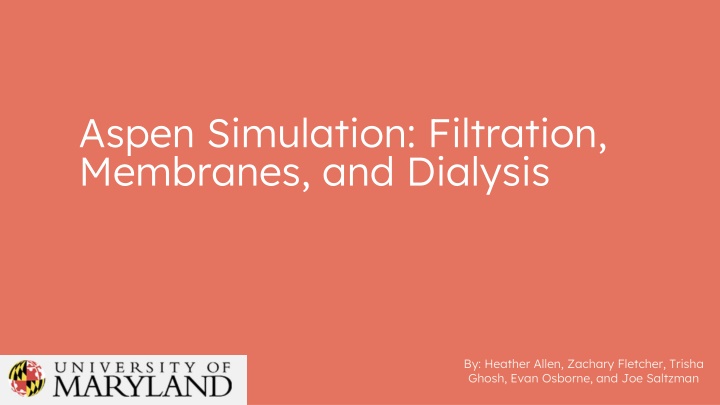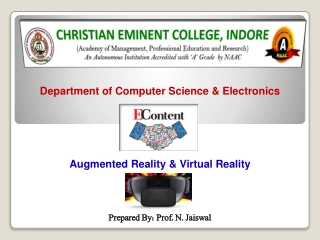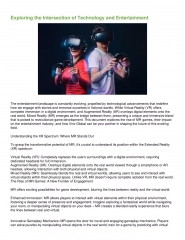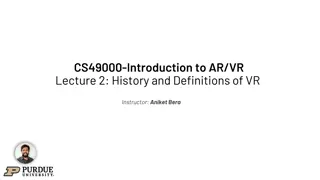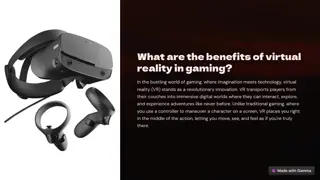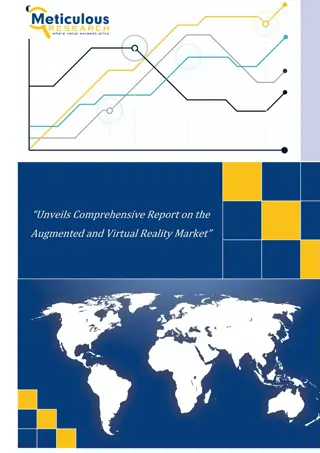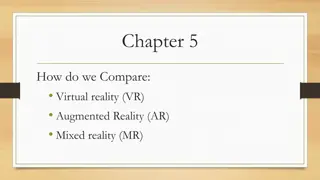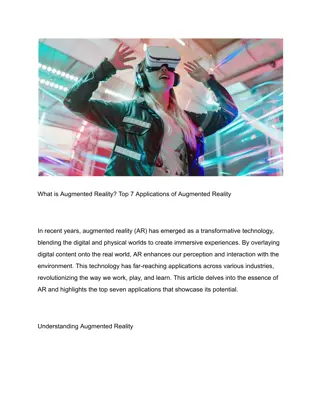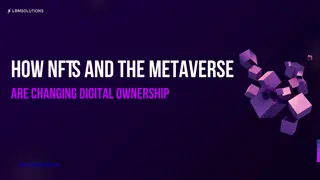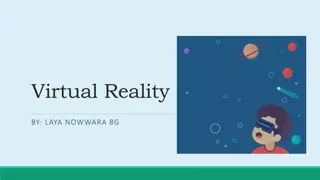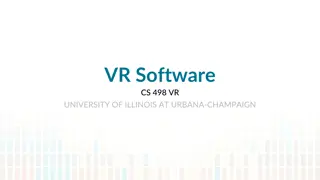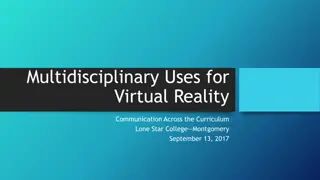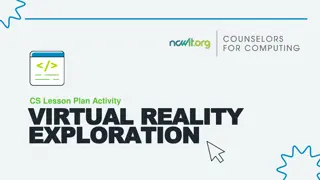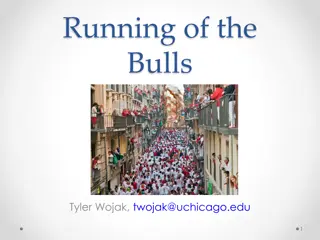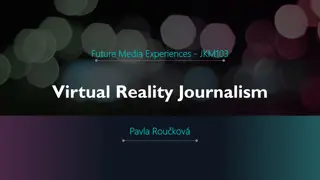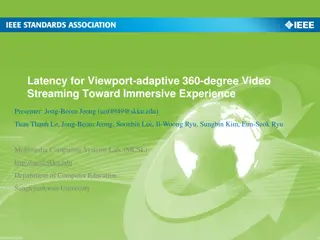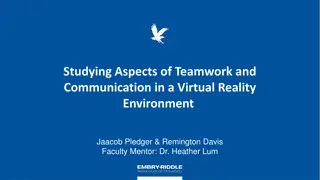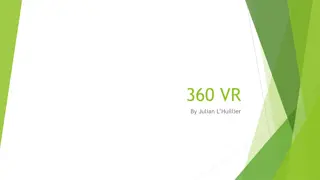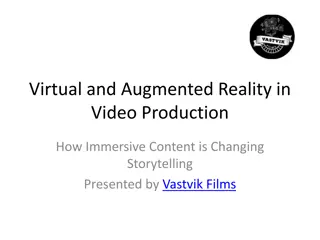Virtual Reality: An Immersive Digital Experience
Virtual reality offers a simulated experience through pose tracking and 3D displays, enhancing entertainment, education, and business applications. Discover non-immersive, semi-immersive, and fully immersive types of VR. Explore the advantages of VR in expanding knowledge areas and understanding complex concepts. Learn about the potential disadvantages, such as motion sickness and near-sightedness.
Download Presentation

Please find below an Image/Link to download the presentation.
The content on the website is provided AS IS for your information and personal use only. It may not be sold, licensed, or shared on other websites without obtaining consent from the author.If you encounter any issues during the download, it is possible that the publisher has removed the file from their server.
You are allowed to download the files provided on this website for personal or commercial use, subject to the condition that they are used lawfully. All files are the property of their respective owners.
The content on the website is provided AS IS for your information and personal use only. It may not be sold, licensed, or shared on other websites without obtaining consent from the author.
E N D
Presentation Transcript
Aspen Simulation: Filtration, Membranes, and Dialysis By: Heather Allen, Zachary Fletcher, Trisha Ghosh, Evan Osborne, and Joe Saltzman
How Do Semipermeable Membranes Work? A semipermeable membrane semipermeable membrane selectively permeates molecules or ions by a chemical potential gradient based on Membrane separations can be lower cost and less energy intensive for many applications Size Charge Hydrophobicity Or specific interactions
Modeling Membrane Processes in Aspen Iterative calculations must be done on Python or Matlab and manually input into a separation column on Aspen Molar Flow Rate in a Hollow Fiber Membrane Retentate: Permeate:
Inputting Membrane Calculations From MATLAB Membrane process constants are defined based on Membrane geometry Membrane material Pressure difference Components involved in separation Differential equation solvers such as ode45 incrementally solve for the final molar flow rates over the length of membrane
Membrane Process Example: Dialysis Relies on the concentration gradient concentration gradient between blood and dialysate to drive toxins out of the blood Dialysis commonly uses hollow fiber membranes membranes made from cellulose Modeling dialysis can be done by setting system parameters and determining the permeability permeability of each component hollow fiber (1)National Institute of Diabetes and Digestive and Kidney Diseases. Hemodialysis. National Institute of Diabetes and Digestive and Kidney Diseases. https://www.niddk.nih.gov/health-information/kidney-disease/kidney-failure/hemodialysis.
Types of Aspen Separators Crossflow Filter (Solid-Liquid) Cyclone (Solid-Gas) Venturi Scrubber (Solid-Gas) Rotary Filter (Solid-Liquid) HydroCyclone (Solid-Liquid) Fabric Filter (Solid-Gas) Electrostatic Precipitator (Solid-Gas) Screen (Solid-Solid)
Cross Flow Filters (CfFilter) in Aspen What do they do? CF filters simulates membrane separation CF filters simulates membrane separation where a liquid flows tangentially across a membrane surface rather than directly through it (unlike dead-end filtration) How are components set up? Particles, solutes, or macromolecules are Particles, solutes, or macromolecules are retained retained on the feed side while solvent or smaller molecules pass through the membrane as the permeate. What is the cross flow filter s purpose? To allow concentration of solutions, concentration of solutions, separation of particles, or purification separation of particles, or purification of specific compounds.
Capabilities of Aspens CF Filter Flexible Membrane Modeling Flexible Membrane Modeling: Supports different types of membranes (microfiltration, ultrafiltration, nanofiltration, reverse osmosis). Customizable Performance Customizable Performance: Allows specification of rejection coefficients, pressure drop, and membrane permeability. Handles Complex Mixtures Handles Complex Mixtures: Can be used for biological, chemical, and industrial separations, such as protein purification, wastewater treatment, and juice concentration. Integration with Other Units Integration with Other Units: Can be connected to upstream and downstream process units like reactors, distillation columns, or heat exchangers.
Applications for Modeling Water Treatment & Desalination Water Treatment & Desalination - Reverse Osmosis (RO) Desalination (used for seawater or brackish water to produce fresh water) - Ultrafiltration for Wastewater Treatment to remove bacteria, viruses, and solids. Dialysis Dialysis - Hemodialysis (Blood Filtration for Kidney Failure Patients): Removes urea, creatinine, and excess fluids from blood. Membrane Gas Separation Membrane Gas Separation - (e.g., CO Removal from Natural Gas)
Cyclone Used to remove solid particles from gas by creating a cyclone within a chamber. In Aspen: Different methods Dimensions Efficiency Pressure drop Molecular weight Centrifugal force Low maintenance Simple design
Baghouse Air pollution control device and dust collector that removes particulates
Model a Baghouse Filter in Aspen with the Fabric Filter (FabFl) Used for separation of liquid from solids. A baghouse has a number of cells. Each cell contains a vertically-mounted, cylindrical fabric filter bag. The filter bags work in parallel to separate solid particles from a gas stream. Use FabFl to rate or size baghouses.
Thank You! Any questions?
